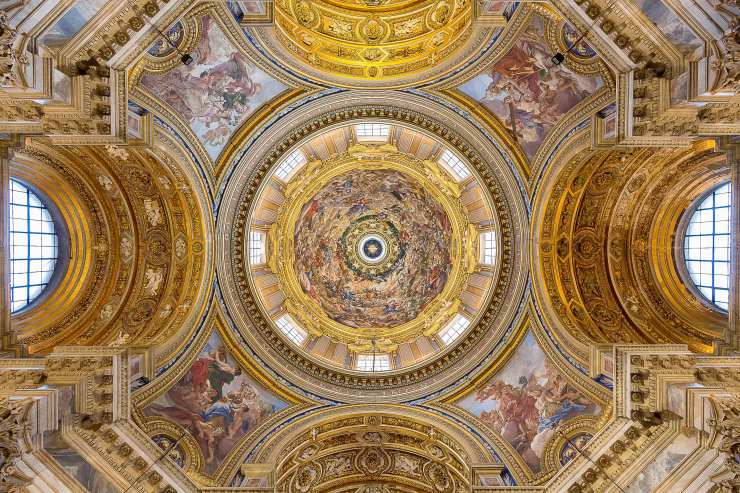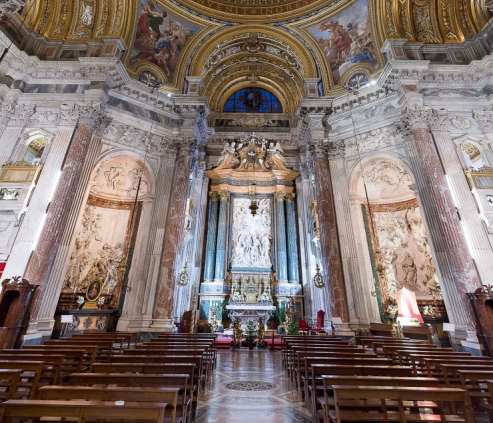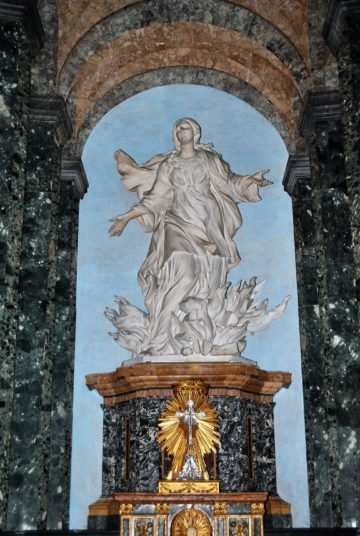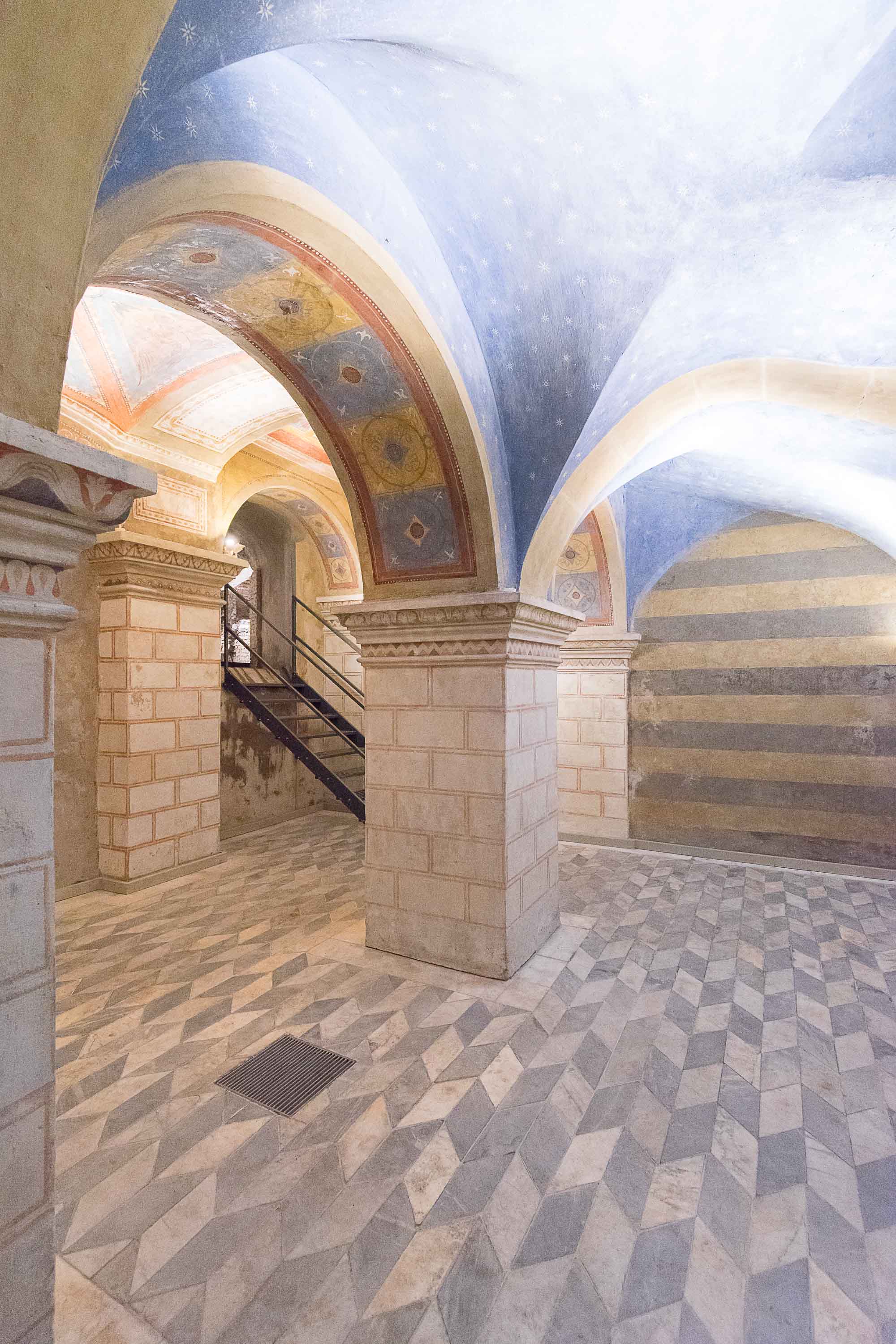La Chiesa è dedicata ad una delle più popolari martiri romane, uccisa nell’anno 304, durante l’ultimo periodo della persecuzione di Diocleziano.
La figura di questa santa si è contraddistinta per la forza di volontà nel difendere i propri valori e la propria devozione a Dio sacrificando la sua stessa vita.
Che siate turisti curiosi o pellegrini in cerca di ispirazione, la Chiesa di Sant'Agnese in Agone è pronta ad offrirvi un'esperienza indimenticabile.
NB: l'area piccola della cripta e l'altare non sono al momento visitabili per restauro degli affreschi presenti.
Nel 1652 Innocenzo X Pamphili, pensò ad una nuova costruzione in luogo dell’antica Chiesa di S. Agnese.
L’incarico venne affidato, inizialmente all’architetto Girolamo Rainaldi, ma presto il pontefice lo sollevò dall’incarico affidandolo a Francesco Borromini, che se ne occuperà fino al 1657.
Con papa Alessandro VII venne istituita una commissione per indagare su eventuali errori del Borromini, che portarono l'architetto ad abbandonare i lavori e a richiamare Carlo Rainaldi che alterò il progetto del Borromini. Nel 1667 Donna Olimpia Maidalchini, vedova del fratello di Innocenzo X, incaricò il Bernini dei lavori di finitura generale, mentre Giovanni Maria Baratta eseguì i campanili e Giuseppe Baratta la scalinata. Le modifiche apportate dal Bernini riguardarono solo l’interno.
Orario di apertura:
dal martedì al sabato
Mattino:dalle ore 9:00 alle ore 13:00 (ultimo ingresso ore 12:30)
Pomeriggio: dalle ore 15:00 alle ore 18:00 (ultimo ingresso ore 17:30).
Accessibilità
Biglietto gratuito

The Greek cross plant presents an octagon with the entrance, the apse and two side chapels on the main axes.
On the remaining sides of the octagon, diagonal to the arms, are four altar niches inserted between pairs of columns in Cottanello red marble. Within these are altars worked in precious marbles, surmounted by sculpted panels. Both the altarpieces and ceilings of the niches were executed according to an overall plan prepared in part by Alessandro Algardi. The altars were still incomplete when Algardi died in 1654, and the works were completed by his students.
When Innocent X died, his remains were moved to the tomb built in the church of Sant'Agnese in Agone.
In facts, its monument is located above the entrance of the church.
Inside are also visible four altars dedicated to Sant' Alessio (1 on the right) Santa Emerenziana (2 on the right) Sant' Eustachio (1 on the left) and Santa Cecilia (2 on the left).
hide
Initially the altar was to be dedicated to the titular saint and the apse altarpiece, commissioned to Algardi, was to depict a miracle of Saint Agnes.
Following the artist's death, Domenico Guidi was commissioned to create the altarpiece, which was officially displayed in 1688.
The large white marble relief depicts, with vibrant vivacity and compelling compactness, the Holy Family with St. Elizabeth, St. John and Zachariah.
Instead, construction work on the altar began in the 18th century, based on a design by Carlo Rainaldi.
On the four antique green columns rests a tympanum surmounted by angels bearing a dove, with the palm symbol of martyrdom.
hide
Following the architectural modification that the Church of St. Agnes in Agone underwent after the death of Pope Innocent X Pamphili, it was deemed appropriate to dedicate not the high altar to the Saint but a chapel closer to the site of her martyrdom.
Against a background of mock perspective stands the statue of St. Agnes, with which Ferrata reproposes, in the setting of the figure of the Saint, a design by Bernini.
The author of the splendid stuccoes that decorate the chapel is Paolo Landini who worked in the church between 1662 and 1664 together with Giovanni Battista Ferrabosco and Giovanni Francesco Rosi.
hide
Going down the stairs of the Crypt there is a work of Algardi depicting St. Agnes with an Angel. Next is a plaque with this inscription: "INGRESSA AGNES HUNC TURPITUDINIS ANGELUM DOMINI PREPARATUM INVENIT" "Entrance of the place of turpitudini where the Angel sent by God intervened to save Agnese".
The crypt is divided into three rooms.
The first, larger, is divided into a large room with two pillars that support three arches. The other two rooms face Piazza Navona, and correspond to the crypt of the medieval church. On the wall of the staircase that descends to the crypt, there is a seventeenth-century fresco depicting Saint Agnes supported by the angel. Below the painting is a marble slab that Papa Damaso (366-384) had engraved, later used as a floor slab.
hide